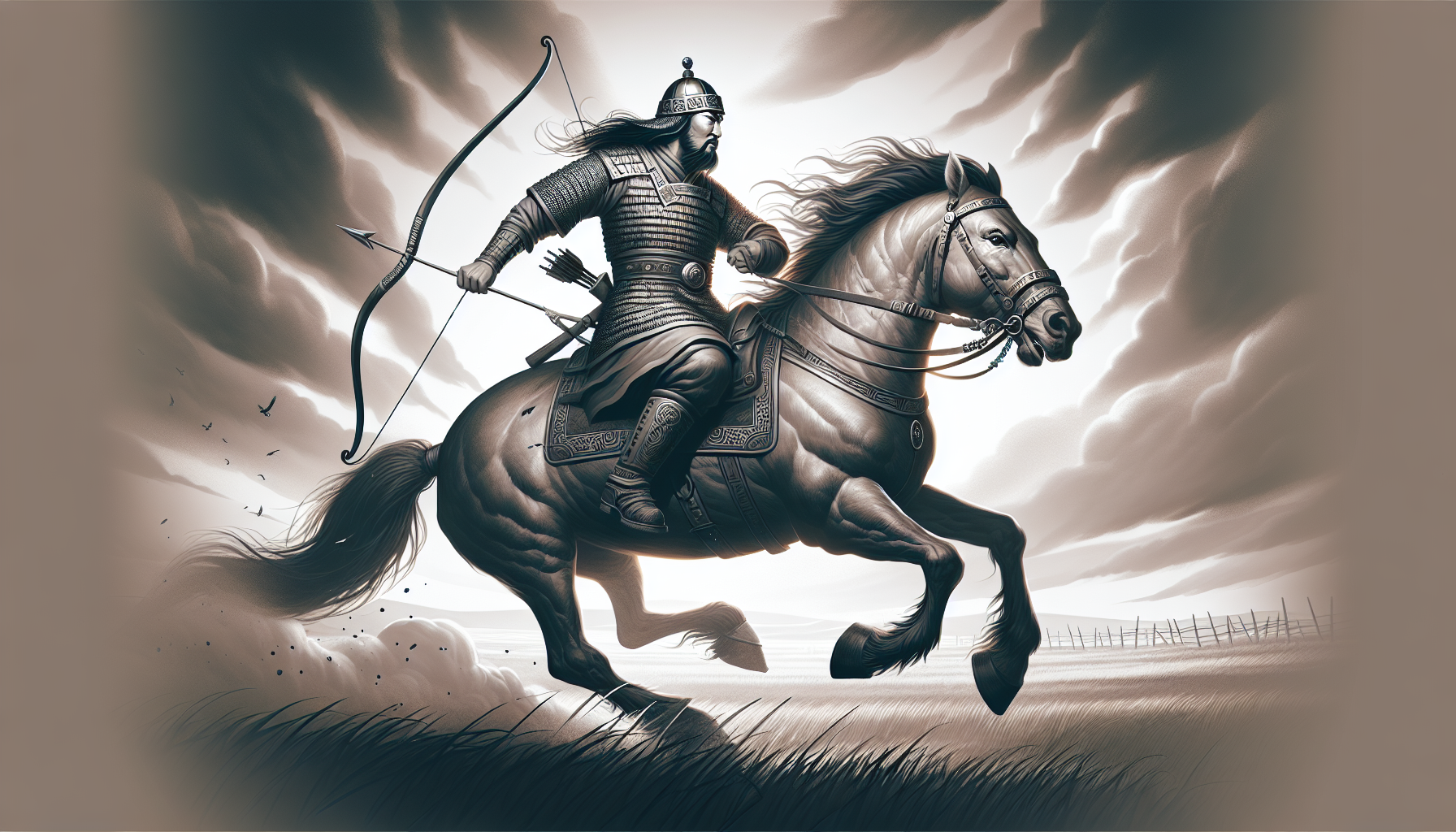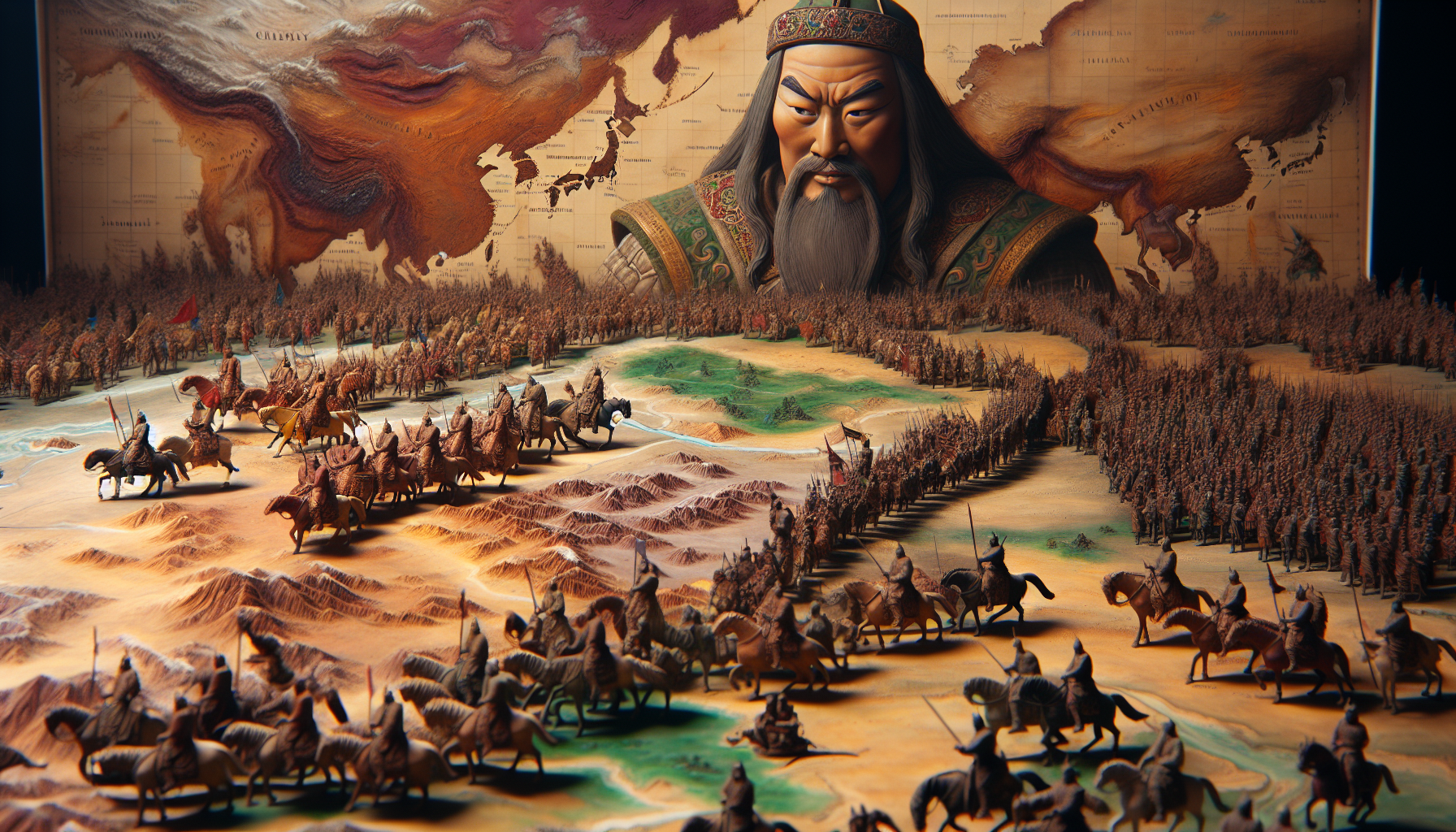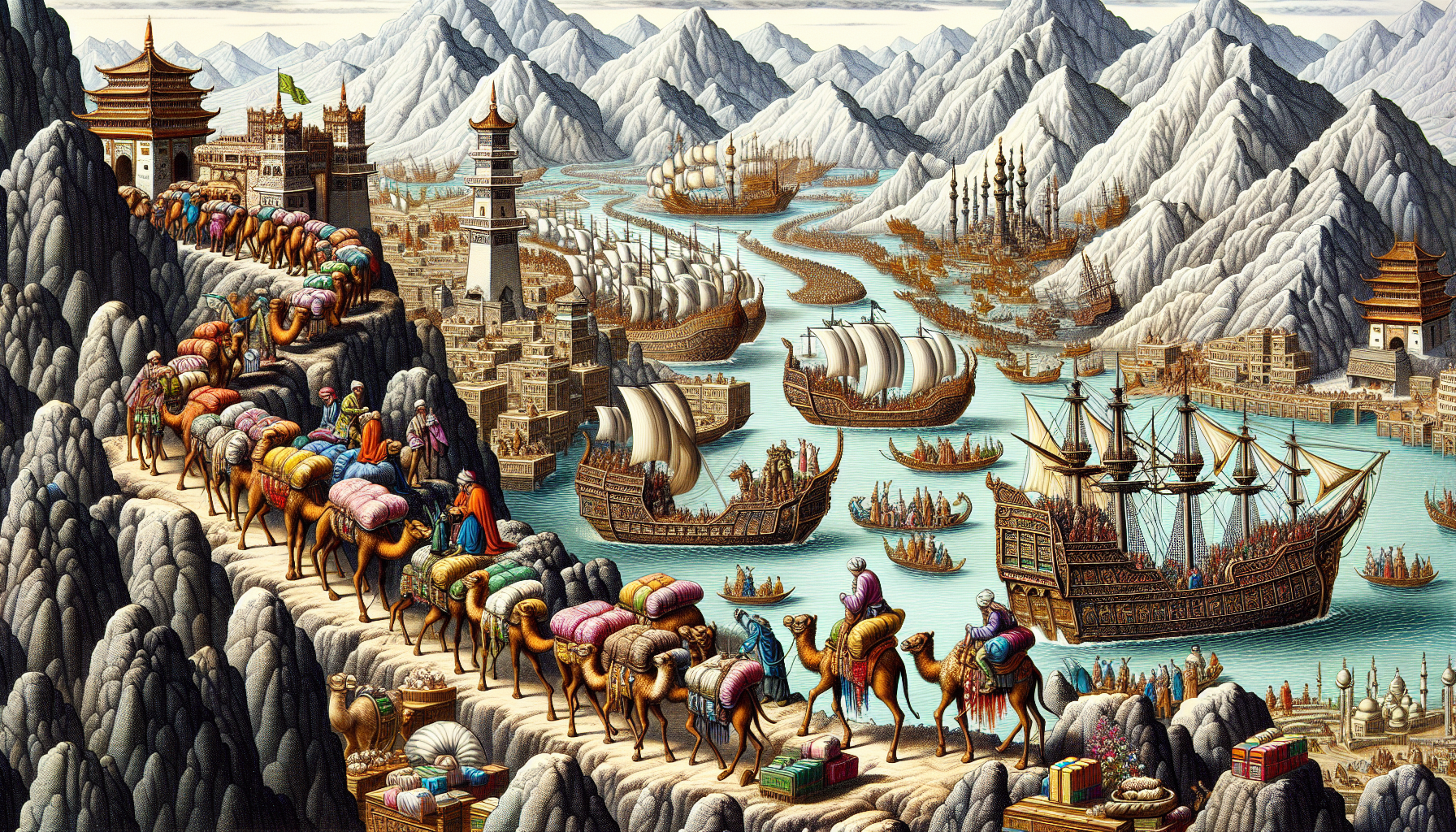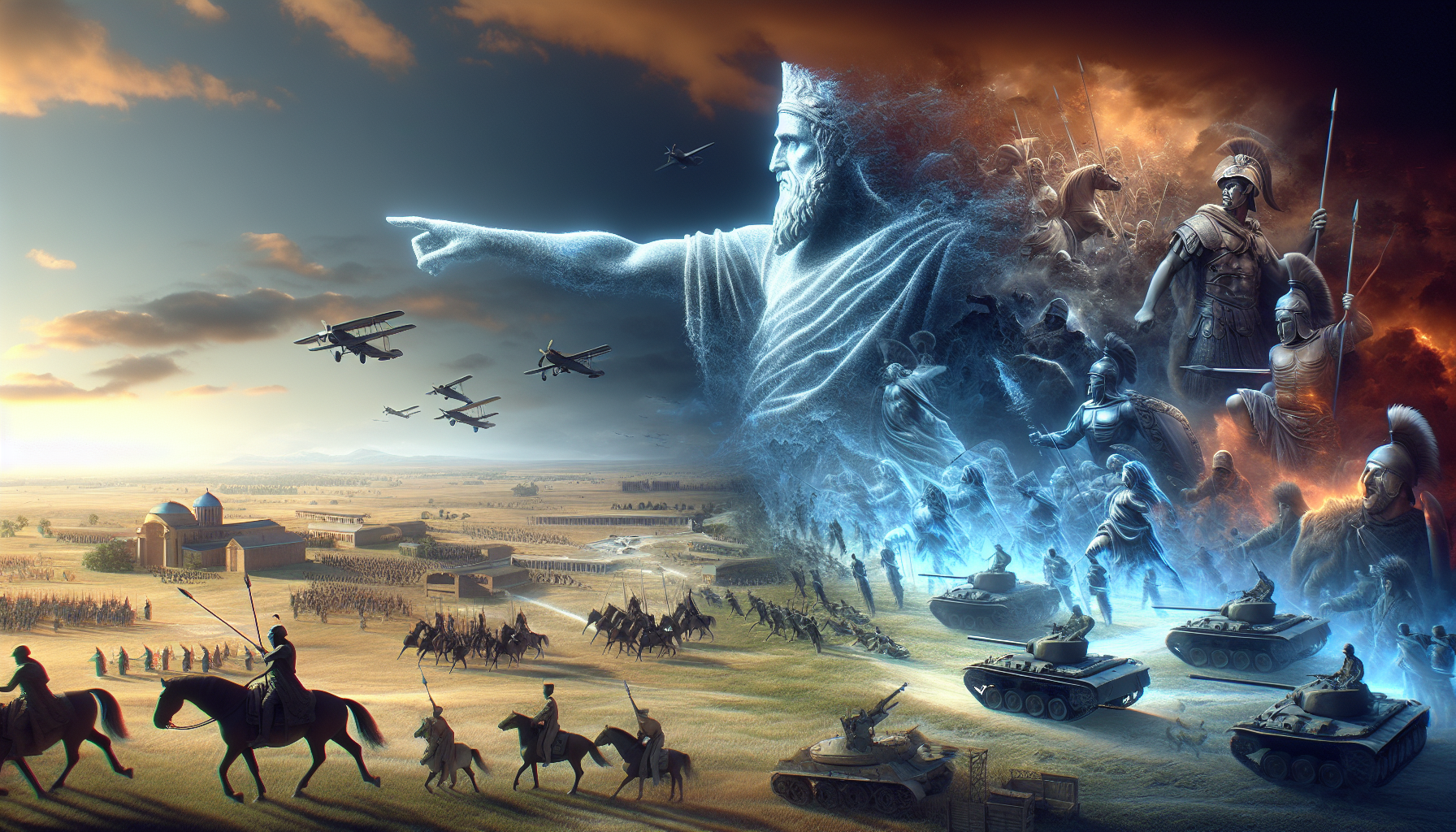Request A Car Rental
Travelling to Mongolia and need a car rental plus extra equipments?
Exploring the Enduring Legacy of Genghis Khan: Conquests and Influences
Genghis Khan’s name is synonymous with conquest, but his legacy is one of enduring influence on modern military, legal, and cultural institutions. In this exploration, we uncover how the legacy of Genghis Khan laid the groundwork for aspects of the modern world, from international law to cultural amalgamation and beyond. Encounter the lasting imprints of Genghis Khan’s empire and grasp the real magnitude of his historical significance.
Key Takeaways
- Genghis Khan, known for his military genius, revolutionized warfare with superior tactics, disciplined forces, and innovative techniques, which allowed him to build one of history’s largest empires.
- The Mongol Empire, under Genghis Khan and his descendants, achieved unprecedented territorial expansion, from Asia to Europe, and facilitated cultural and political integration which encouraged trade, religious tolerance, and administrative innovation.
- Despite its impressive reign, the Mongol Empire faced inevitable decline due to succession issues, internal strife, and external resistance, but its lasting influence continues in modern legal systems, military strategies, and cultural exchanges.
Genghis Khan's Military Genius

Genghis Khan, also known as the Great Khan, stands out in the annals of history as a military leader of unmatched infamy and respect. His military force was a marvel, exhibiting:
- Tactical superiority
- Strategic brilliance
- Precision battlefield tactics
- Strategic deception
These qualities set new standards for military expansion and conquest. Genghis Khan’s military genius was leagues ahead of his contemporaries, contributing significantly to a string of unparalleled victories.
The very foundation of the Mongol military’s dominance was its unity and discipline, a far cry from the tribal or familial allegiances that often fragmented other armies of the era. Organized on a decimal system, the Mongol army’s strength lay in its ability to execute complex strategies, leveraging the extraordinary maneuver warfare capabilities of Mongol horsemen who could:
- outmaneuver larger forces with awe-inspiring agility
- launch surprise attacks from unexpected directions
- quickly regroup and adapt to changing battlefield conditions
- communicate and coordinate effectively through a sophisticated system of signals and messengers
This level of unity and discipline allowed the Mongols to conquer vast territories and establish one of the largest empires in history.
Innovative Warfare Techniques
Genghis Khan’s forces instilled paralyzing fear in the hearts of their enemies, but how did they accomplish this? The answer lies in their masterful use of psychological warfare, where visual deceptions and information warfare were instrumental in misleading enemy forces. These fearsome stories, espionage, and misinformation campaigns were so effective that they remain relevant even in the annals of modern psychological warfare.
Renowned for the stamina and skill of their horsemen, the Mongol army was a symbol of speed and agility. Their quick and decisive maneuvers, epitomized by lightning attacks and ambush tactics such as feigned retreats, were not mere brute force but choreographed ballets of war that lured enemies into meticulously laid traps.
Siege Warfare Mastery
Fortified cities, however, stood defiantly in the path of the Mongol juggernaut. Genghis Khan’s siege warfare mastery was equally innovative. During the invasion of the Khwarazmian Empire, his forces wielded gunpowder weapons and catapults capable of launching explosive bombs, showcasing an advanced siegecraft that would become legendary. These diverse weaponry systems, including early forms of artillery, catapulted the Mongol Empire’s military prowess into a new era of conquests.
When Mongol armies encountered fortresses like impenetrable bastions, they employed cunning rather than brute strength. Fake retreats and strategic positioning allowed them to exploit vulnerabilities, ensuring their sieges were not prolonged battles but swift and decisive victories that further cemented their reputation.
The Formation and Expansion of the Mongol Empire

Genghis Khan forged an unparalleled empire, which:
- Stretched from the eastern shores of Asia to the heart of Europe
- Transformed a conglomeration of warring tribes into a colossal dominion
- Under his rule, and that of his descendants, became the largest contiguous empire in history
- Spanned diverse landscapes and cultures
Fueled by military might, an unquenchable thirst for conquest and insatiable curiosity about the world beyond the steppes of Mongolia, the empire expanded in an unprecedented manner. It was an expansion that brought the Mongols into contact with civilizations from the Xi Xia in China to the heart of Russia, forever altering the course of history.
Uniting the Tribes
Genghis Khan, then known as Temüjin, had to first unite the fractious tribes of Mongolia before the Mongol Empire could cast its shadow across Asia and Europe. His path to becoming the universal ruler was paved with strategic alliances and significant victories over tribes such as the Merkits, Naimans, and Tatars. Temüjin’s leadership was characterized by the forging of strong alliances, including a seminal friendship with Jamukha, and a meritocratic system that rewarded soldiers and their families with a fair share of the spoils of war.
The crowning achievement of these efforts was the Kurultai of 1206, where the leaders of the Mongol tribes convened to proclaim Genghis Khan as the supreme ruler of all Mongols, marking the beginning of an empire that would reshape the world.
Conquests in Asia and Europe
The Mongol conquests under Genghis Khan were a series of campaigns that redefined the boundaries of the known world. The disciplined and well-trained Mongol armies overpowered adversaries, extending their reach across:
- China
- Russia
- Persia
- Eastern Europe
This created a tapestry of territories united under Mongol rule. The strategic conquest of the Kara-Khitai Khanate provided a critical foothold in Central Asia, leading to the eventual subjugation of the Khwarazmian Empire and opening doors to the Middle East.
Beyond Central Asia, the Mongols’ imperial dominion incorporated vast regions including:
- Iran
- Iraq
- Syria
- the Caucasus
- parts of Turkey
While their incursions reached the Middle East, including a push towards Gaza in Palestine, they were ultimately unable to expand into the western territories. This is illustrated by their withdrawal from Syria and the defeat at the hands of the Mamluks at the Battle of Ain Jalut.
Cultural and Political Impacts of Mongol Rule

Far from just being a vehicle for military conquests, the Mongol Empire served as a crucible for cultural exchange and was a pioneer in administrative innovation. The grand capital of Karakorum became a nexus for scholars, artists, and religious figures, fostering an environment where ideas from across the world intermingled. The establishment of the Pax Mongolica under Mongol rule created a period of stability that bolstered trade along the Silk Road, enhancing cultural interaction between East and West.
This era of Mongol rule saw:
- The integration of diverse peoples into a governance system that prioritized efficiency and inclusivity
- Advancements such as the Yam relay system and the innovative use of written scripts
- Setting a precedent for future empires
- Mongolian administrative practices influencing the bureaucratic systems of conquered territories and successor states.
Trade Routes and Commerce
Trade and commerce flourished like never before under the vigilant leadership of the Mongol emperors. The empire’s leadership provided financial support to merchants, including paying more than the market price for goods and offering tax exemptions, to stimulate economic growth. To facilitate trade, the Mongols constructed and maintained roads and bridges and established postal stations that not only served as hubs for resupply but also as safe havens protected by Mongol governance.
The Mongol Empire’s military campaigns were instrumental in bridging the gap between East and West, ushering in an era of prosperity known as the Pax Mongolica. This period allowed for an unprecedented exchange of trade, technology, and ideas, with merchant associations emerging as a fundamental part of the economic landscape, sharing profits and losses and thereby enhancing the viability of long-distance trade.
Religious Tolerance and Coexistence
Genghis Khan’s policies of religious tolerance marked a revolutionary approach in the realm of faith. The Mongol Empire granted tax exemption and freedom from public service to religious leaders, fostering an atmosphere where multiple faiths could coexist peacefully. The Mongol emperors championed interfaith dialogues, sponsoring debates among clerics from various backgrounds and allowing the spread of diverse religious practices throughout their expansive empire.
Even as Tibetan Buddhism gained prominence during the Yuan dynasty, the Mongol policy of religious openness continued to support a multiplicity of religions, demonstrating a level of tolerance that was remarkable for the time and which has had lasting effects on the regions they once ruled.
The Fall of the Mongol Empire and its Aftermath
The Mongol Empire, despite its unprecedented successes, wasn’t immune to the challenges that plague any vast dominion. The seeds of its decline were sown in:
- the internal strife and succession issues that erupted following Genghis Khan’s death
- the empire’s administrative structure, once a marvel of efficiency, struggled to maintain the unity of its expansive territories
- fragmentation into smaller khanates that pursued their interests independently
The death of Möngke Khan during his campaign in China marked a turning point as it exacerbated succession crises and led to a decentralization that further weakened the empire over several decades. Environmental changes, such as harsh winters and pastureland degradation, compounded these administrative issues, undermining the Mongols’ economic foundation and military might.
Internal Strife and Succession Crises
The death of Genghis Khan plunged the Mongol Empire into a series of succession crises and power struggles among his descendants, which chipped away at the once-unified empire. The lack of a clear succession process led to:
- Bloody civil wars, most notably the Toluid Civil War
- The ensuing conflict between Kublai Khan and Ariq Böke
- These conflicts revealed rifts within the empire that could not be easily mended.
The leadership of Ogedei Khan was marked by indulgence and weakened governance, signaling a departure from the strength of Genghis Khan’s rule. As rivalries between factions of Genghis Khan’s descendants continued, they hindered military cooperation and magnified the empire’s vulnerabilities, allowing external adversaries to gain an advantage, as exemplified by the Mamluks’ victory at Ain Jalut.
External Threats and Resistance
The fragmentation of the Mongol Empire was not only a consequence of internal strife but also the result of increased resistance from emerging powers and local rebellions. The Battle of Ain Jalut in 1260 marked a significant defeat for the Mongols at the hands of the Mamluks, signaling the limitations of Mongol military power and heralding a shift in the balance of power.
Newly emerging powers and local rebellions posed significant military challenges to the Mongol Empire, which, in its fragmented state, found it increasingly difficult to suppress such uprisings. The once indomitable empire that had conquered vast territories and subdued countless enemies was now facing the inevitable reality of decline.
Genghis Khan's Lasting Influence on the Modern World

Although Genghis Khan’s empire may have receded into history, its influence on the modern world remains indelible. The Mongol Empire’s legal code, Yassa, set a precedent for laws that transcended local customs, influencing modern legal systems with its universal applicability. The introduction of the Mongolian script under Genghis Khan’s rule was a significant step towards increasing literacy across the empire, laying the groundwork for education systems that would follow.
Genghis Khan’s emphasis on trade and open communication networks contributed to the early stages of globalization, facilitating the exchange of goods, ideas, and technology between East and West. This exchange helped to erode geographical and cultural barriers, pioneering a transcontinental empire that set the stage for an interconnected world.
Impact on Warfare and Military Strategy
Genghis Khan’s military genius continues to profoundly influence modern military practices and doctrines. His approach to army structure and maneuver warfare echoes in contemporary military strategies, where rapid mobility and flexibility are paramount. The Mongol army’s emphasis on horsemen has inspired the development of mechanized and airborne forces in the 20th century, emphasizing the importance of speed in modern warfare.
Genghis Khan’s disciplined military structure and clear chain of command are mirrored in the organizational frameworks of armies around the globe. The principles of coordinated maneuvers and maintaining the initiative, reminiscent of Genghis Khan’s tactics, are evident in doctrines like the U.S. Army’s AirLand Battle, showcasing the enduring influence of the Mongol military strategies.
Cultural Legacy
The Mongol Empire’s rule has led to profound and enduring cultural ramifications. Some of these include:
- An influx of Chinese artistic motifs into Persian art, an enduring testament to the amalgamation of diverse traditions
- Artisans being held in high esteem and freely moving across the empire, sparking an exchange of artistic goods and skills
- Enriching the cultural fabric of the regions under Mongol influence
This cultural melting pot gave rise to distinct artistic periods, such as those seen during the Ilkhanid dynasty in Iran, where Chinese and Islamic traditions merged to create a unique artistic expression. The Great Mongol Shahnama, an epic literary and artistic work, epitomizes the Mongol’s patronage in literature and art, a legacy that continues to captivate scholars and art lovers alike. Exhibitions like ‘The Legacy of Genghis Khan’ further underscore the vast artistic connections and the unified aesthetic that developed under Mongol rule, ensuring that its cultural legacy persists through the centuries.
Summary
As we reach the end of our exploration, the legacy of Genghis Khan stands as a monumental chapter in the annals of history. From the strategic brilliance of his military campaigns to the cultural syncretism fostered under Mongol rule, the echoes of Genghis Khan’s influence reverberate through the modern world. His story is one of transformation—of a world reshaped by the force of one man’s vision and the empire he built, which, for a time, bridged East and West in an unprecedented way. May the saga of Genghis Khan inspire us to understand the indelible impact of historical figures and the lasting influence they can have on the world, long after they are gone.
Frequently Asked Questions
What is the genetic legacy of Genghis Khan?
About 0.5 percent of the male population in the world, roughly 16 million descendants, carry y-chromosomes that are nearly identical to Genghis Khan's. This genetic legacy is present in about 8% of men living in the region of the former Mongol empire.
What is the major lasting legacy of the Mongols?
The major lasting legacy of the Mongols is their impact on trade through the Silk Road, cultural development, and the potential for unity among diverse peoples. These legacies have had a lasting influence on history.
What are 5 major accomplishments of Genghis Khan?
Genghis Khan's major accomplishments include establishing a giant and unified empire, creating the first Mongol writing system and postal system, building the world's most powerful fast cavalry, leading an "entire nation" in arms, and creating the world's first artillery.
How did Genghis Khan's military tactics differ from those of his contemporaries?
Genghis Khan's military tactics were revolutionary, as he focused on rapid maneuvers, psychological warfare, and a highly disciplined army organized on a decimal system, rather than tribal or familial ties. His strategic deception and precise battlefield tactics allowed his forces to outmaneuver and outwit larger armies.
What was the impact of the Mongol Empire on trade and commerce?
The Mongol Empire greatly influenced trade and commerce by supporting merchants financially, developing trade infrastructure, and ensuring safe passage of goods along the Silk Road during the Pax Mongolica, which led to an extensive exchange of goods, ideas, and technology across Eurasia.
Request A Car Rental
Travelling to Mongolia and need a car rental plus extra equipments?






